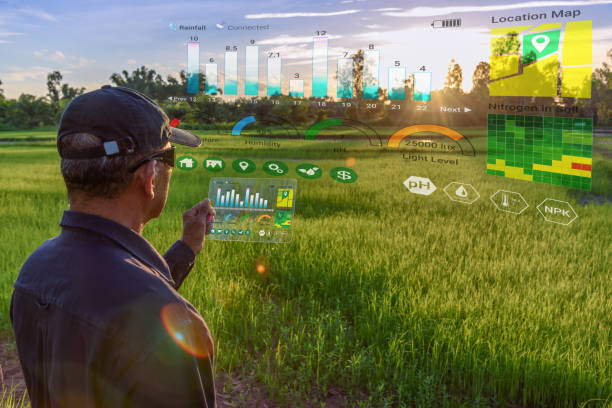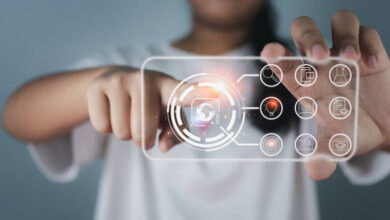How To Use IoT For Precision Agriculture

Now see a world where farmers can use technology to grow more food with fewer resources. A world where farmers can track the conditions of their crops and soil in real time, and make adjustments as needed.
This is the world that we can create with IoT for precision agriculture.
IoT for precision agriculture is the use of sensors and other connected devices to collect data about crops and soil conditions. This data can then be used to make better decisions about irrigation, fertilisation, and pest control.
How does IoT for precision agriculture work?

According to Analytics Step, IoT for precision agriculture works by using sensors to collect data about crops and soil conditions. The sensors can be placed in the field, on the plants, or even in the air.
The data collected by the sensors is then sent to the cloud, where it can be analysed and used to make decisions about crop management.
Benefits of IoT for precision agriculture
There are many benefits to using IoT for precision agriculture, including:
- Increased yields: IoT for precision agriculture can help farmers to increase their yields by providing them with real-time data about the conditions of their crops and soil. This data can then be used to make better decisions about irrigation, fertilisation, and pest control.
- Reduced costs: IoT for precision agriculture can help farmers to reduce their costs by helping them to use resources more efficiently. For example, IoT-enabled irrigation systems can help farmers to reduce their water usage.
- Improved environmental sustainability: IoT for precision agriculture can help farmers to reduce their environmental impact by helping them to use resources more efficiently and reduce their use of chemicals.
How to use IoT for precision agriculture
There are a number of different ways to use IoT for precision agriculture. Some of the most common applications include:
- Crop monitoring: IoT can be used to monitor the conditions of crops in real time. This data can then be used to make decisions about irrigation, fertilisation, and pest control.
- Soil monitoring: IoT can be used to monitor the conditions of the soil in real time. This data can then be used to make decisions about irrigation, fertilisation, and nutrient management.
- Irrigation management: IoT can be used to automate irrigation systems. This can help farmers to save water and reduce their costs.
- Pest control: IoT can be used to monitor pests and diseases. This data can then be used to make decisions about pest control.
Challenges of using IoT for precision agriculture
There are a number of challenges associated with using IoT for precision agriculture, including:
- Cost: The cost of IoT sensors and other equipment can be high.
- Complexity: IoT systems can be complex to set up and maintain.
- Data security: It is important to ensure that the data collected by IoT sensors is secure.
Frequently asked questions about How to use IoT for precision agriculture.
What are some of the specific ways that IoT is being used in precision agriculture today?
Some of the specific ways that IoT is being used in precision agriculture today include:
- Crop monitoring: IoT sensors are being used to monitor the temperature, humidity, and soil moisture levels in fields. This data is then used to make decisions about irrigation, fertilisation, and pest control.
- Soil monitoring: IoT sensors are being used to monitor the pH levels, nutrient levels, and salinity levels in the soil. This data is then used to make decisions about irrigation, fertilisation, and nutrient management.
- Irrigation management: IoT-enabled irrigation systems are being used to automate irrigation schedules. This can help farmers to save water and reduce their costs.
- Pest control: IoT sensors are being used to monitor for pests and diseases. This data is then used to make decisions about pest control.
What are some of the benefits of using IoT for precision agriculture?
There are many benefits to using IoT for precision agriculture, including:
- Increased yields: IoT for precision agriculture can help farmers to increase their yields by providing them with real-time data about the conditions of their crops and soil. This data can then be used to make better decisions about irrigation, fertilisation, and pest control.
What are some of the challenges of using IoT for precision agriculture?
Some of the challenges of using IoT for precision agriculture include:
- Cost: The cost of IoT sensors and other equipment can be high.
- Complexity: IoT systems can be complex to set up and maintain.
- Data security: It is important to ensure that the data collected by IoT sensors is secure.
What are some of the ethical considerations involved in using IoT for precision agriculture?
Some of the ethical considerations involved in using IoT for precision agriculture include:
- Privacy: IoT for precision agriculture collects a lot of data about crops and soil conditions. This data could be used to track farmers’ activities and reveal sensitive information about their businesses. It is important to ensure that this data is used ethically and responsibly.
- Food safety: IoT for precision agriculture could be used to produce more food with fewer resources. However, it is important to ensure that this food is safe to eat.
- Sustainability: IoT for precision agriculture could help to reduce the environmental impact of agriculture. However, it is important to ensure that these technologies are used in a sustainable manner.
Conclusion
IoT for precision agriculture is a powerful tool that has the potential to revolutionise the way that food is grown. However, it is important to be aware of the challenges and ethical considerations associated with using IoT for precision agriculture.
I believe that everyone should have access to safe and affordable food. IoT for precision agriculture has the potential to make this a reality.
However, it is important to use IoT for precision agriculture in a responsible and ethical manner. We need to ensure that the data collected by IoT sensors is used to benefit farmers and consumers, and not to exploit them.
We also need to ensure that IoT for precision agriculture is used in a sustainable manner. We need to make sure that these technologies do not harm the environment or contribute to climate change.
I encourage everyone to support the responsible and ethical development of IoT for precision agriculture. By working together, we can make the world a better place, one farmer and one consumer at a time.








